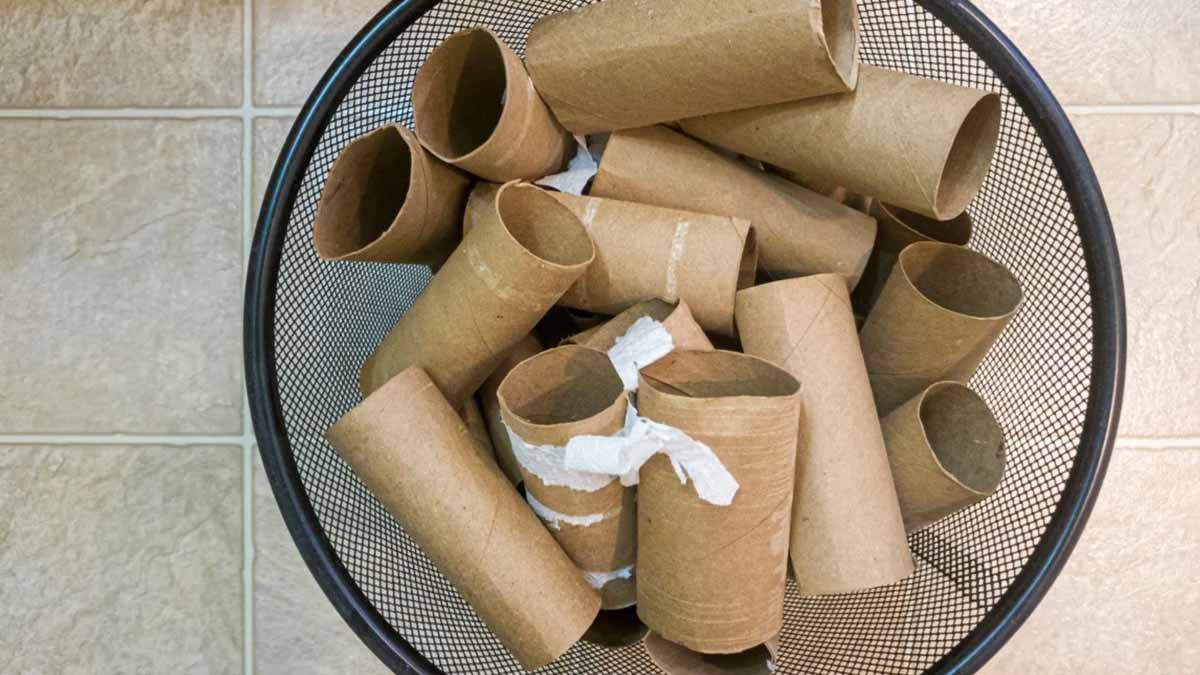A small change can recharge your soil, lift plant vigor, and cut waste at home. The cardboard cylinders you toss daily hold quiet power, because they feed microbes, regulate moisture, and invite earthworms that rebuild topsoil. Use toilet paper rolls with intention, and the garden answers back with richer humus, steadier growth, and fewer inputs.
Carbon, structure, and the science behind the trick
Cardboard is “brown” carbon. It balances nitrogen-heavy scraps and grass, so the pile heats evenly and breaks down cleanly. Shred tubes, then mix with kitchen peels to open airflow. Microbes stay active, while clumps loosen. The result is stable compost that resists compaction and breathes.
Only clean tubes belong in the bin. Remove tissue shreds and sticky tape, because residues slow decay and can attract pests. Add pieces in thin layers between green materials. This sandwiching spreads carbon through the matrix, so water moves, oxygen circulates, and core temperatures remain productive across seasons.
Decomposition takes months, shaped by temperature and moisture. Warm, evenly damp piles transform faster; dry piles stall. Rainy periods need extra carbon; hot spells need quick turns and light watering. Place toilet paper rolls where airflow is good, then rotate the heap as steam fades. Balanced piles finish as crumbly, plant-ready humus.
How toilet paper rolls fit into everyday compost routines
Cut tubes into coins or strips for quicker decay. Small pieces mingle with coffee grounds and grass, which reduces mats and sticky patches. Because carbon fibers hold form, the pile stays fluffy. Add equal parts green and brown, then fold in food scraps to keep odors down and heat steady.
Layer whole tubes between kitchen waste and dry leaves when time is short. This “brown layer” prevents soggy pockets and helps microbes reach every corner. Bury a few pieces near the edges, as those zones cool fastest. Even coverage matters because uniform heat finishes compost more reliably.
Use toilet paper rolls outdoors and indoors. Balcony bins need breathable structure even more than yard piles do. Office worm farms love cardboard bedding, while compact kitchen caddies avoid sludge with a handful of strips. Because the fibers wick water and then release it slowly, moisture swings smooth out with minimal effort.
Earthworms, tunnels, and living soil that keeps working
Worms treat cardboard like bedding and food, so populations rise quickly. They pull fibers into galleries, chew them down, and leave castings packed with plant-available nutrients. Those castings buffer pH, hold water, and carry enzymes that keep decomposition moving even when weather shifts.
As worms tunnel, soil opens. Air reaches roots, and water infiltrates instead of pooling. Basil responds with steady leafing, while thirsty vegetables handle hot days with less stress. Pinto beans set deeper roots, then branch strongly because oxygen and moisture reach the rhizosphere at the right pace.
Humus from worm activity binds crumbs into stable aggregates. Beds crust less after rain, and irrigation intervals stretch out naturally. Fold a single mention of toilet paper rolls into your worm routine by adding a weekly handful under mulch. The bedding refreshes, microbes feast, and roots follow those worm-made highways.
Moisture control and microbial vigor with toilet paper rolls
Cardboard acts like a sponge, so piles don’t drown during storms or desiccate during heat. Fibers sip excess water, then share it back as the core dries. Because conditions stay moderate, beneficial microbes thrive and pathogens lose their edge. That balance leads to even, predictable breakdown.
Compost should feel like a wrung-out sponge. If it drips, add browns and stir. If it crinkles dry, add greens and a splash. Place a few tube strips near the lid or the base, since those zones swing fastest. Stable moisture shortens the road from scraps to dark, sweet humus.
This same regulation aids beds and containers. Tuck pieces beneath mulch rings around tomatoes; drip lines will stay efficient because evaporation slows. Indoor orchids benefit from finished compost with elastic structure, so roots breathe while media holds moisture. Add toilet paper rolls to feed that structure before the final screen.
From waste reduction to long-term soil resilience
Using cardboard keeps material out of bins and trucks, so households cut waste at the source. It fits a circular economy mindset: feed soil, then let soil feed you. Healthier biology reduces synthetic fertilizers, because nutrient cycling accelerates and stays available across weather swings.
Diverse beds benefit most. Pair carbon-built compost with companion plantings, and roots share microbes, space, and signals that calm pest pressure. Elecampane, herbs, and vegetables grow sturdier when soil texture is open and living. Because disease organisms face competition, sprays often drop from routine to rare.
Over seasons, compost enriched with toilet paper rolls deepens topsoil. Aggregates last longer, organic matter rises, and water retention improves. Beds bounce back after heat or storm. Inputs shrink, costs fall, and biodiversity climbs. A small habit in the kitchen translates into a large, resilient engine beneath your plants.
One small habit today that compounds into healthier soil tomorrow
Keep a simple loop: save tubes, shred a few, layer some, and feed worms. The pile breathes, moisture evens out, and humus returns to beds that repay the care with color and yield. When toilet paper rolls stop being trash, the garden starts compounding benefits you can see and taste.
